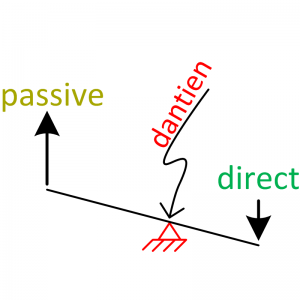
In terms of power, the arms are more or less insignificant. A screw is driven into wood with a tool to transmit torque – a screwdriver. In an ideal (taiji) system Energy_in = Energy_out, but in reality it’s Energy_in = Energy_transmitted – Energy_lost(friction, aim/structure, material…). We want to minimize the losses as much as possible to come as close as possible to the ideal case. Since a screwdriver is one solid piece, the loss is proportional to the ability of the user to keep the driver straight while applying constant pressure to the screw and rotating the handle i.e. the wobble or ‘concentricity’ of the applied torque vector with the CL axis of the screw. This is why imagining a target further away than your immediate target is recommended for accuracy. Geometrically you are narrowing your range of losses. Mathematically you are increasing your probability to hit the mark. Using the above ideas we can get a sense of one directional action:1. Place screw
2. Apply enough perpendicular force to screw head to keep full contact between screw socket and driver bit
3. Rotate driver –> screw travels axially
Repeating steps 1-3 incrementally moves the screw along it’s longitudinal axis of rotation. Notice each step involves one action to move the screw on it’s intended course. Although each action is discrete, they are superimposed and not combined – a cardinal mistake on several fronts. If you read the above steps as a machine would (1’s and 0’s), the screw would travel straight and true every single time. For whatever reason most of us however read the steps and (sub)consciously add\remove others. Keep in mind a screw has only one function as far as it’s concerned (to penetrate) and only one method (spiral). If you made an honest comparison between what you are supposed to do and what you actually did, it’s safe to say they will never be the same. Hence the results will never be the same. But the importance lies in your intention: trusting the definition of the result and it’s method.
Now assume your arm is a screw and every other body part behind it is the driver. Revisiting the screwdriver analogy we have the classic 1-2-3:
1. Establish intentional spatial point A — (contact)
2. Maintain constant contact aimed at point A — (lock)
3. Rotate (drive) point B to drive point A
Naturally when this sequence is iterated, the last point (B) would be in contact with the ground. Mechanically the body can then be seen as a transmission vessel much more complex than any other man-made mechanical transmission since every part of the body is connected and has the potential for multiple degrees of freedom. A simple ‘discretization’ of this analog of 1-2-3 would be to split the body at a shoulder so you end up with two pieces: one arm and everything else. 1-2-3 becomes
- Place arm
- Lock arm
- Drive arm with everything else
With sincere practice you will find bigger means more restriction since your body is not tuned to the increased range of motion. It is important to not move past the point where you physically hit a limit of rotation. You know you have reached this point when you sacrifice your fixed rotation point e.g. shoulder pops up. One benefit of going low as a beginner is to help prevent your kua from moving side to side. All the tension created helps stabilize the kua in preventing it from collapse. If you always practice in a comfortable high position, it is much easier to collapse the kua.
Resolving
Resolve the action, don’t move your spot. If you can stay steady, no up or down, you are working your ability for holding a spot.
Exercise 1
- Squat with one leg out
Bottom should be 1″ from the ground
Forward bent knee should be 2″ from the ground
Front toes pointing up - Bounce stretch. This gets brain more comfortable with going lower. Stretching is all mental; you have to get the brain to allow the body to relax.
- Step out wide 45-degrees with toes up
- Plant foot
- Grip the ground with toes while placing the knee over the foot
- Lock the knee over the foot forcibly by placing both hands on top of knee and pushing perpendicular to the ground
- Bring back foot up without any movement or wobble of the front knee or upper body. This is where you practice “sucking” the trailing leg.
Practice the splits and sucking everyday for a few minutes each. The goal is not in how much you do each day, but how often you keep it up i.e. consistency. These will stretch and strengthen your internals, most notably the tendon/muscle running down your interior thigh (gracilis)?

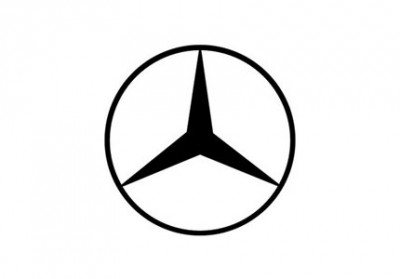
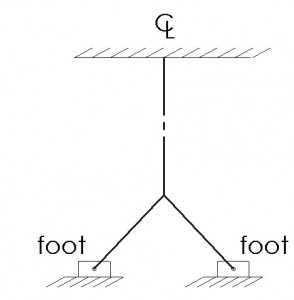
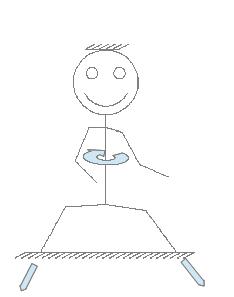
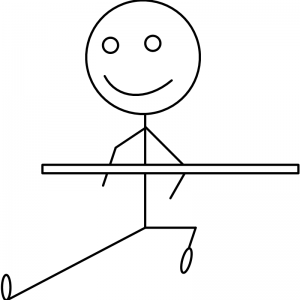
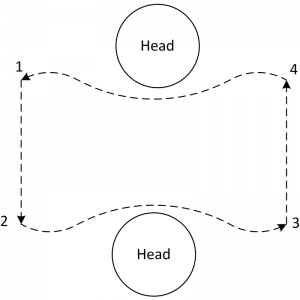
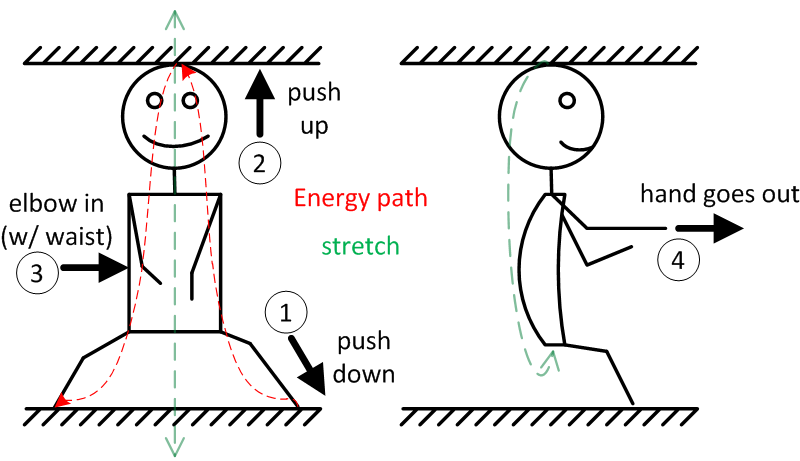
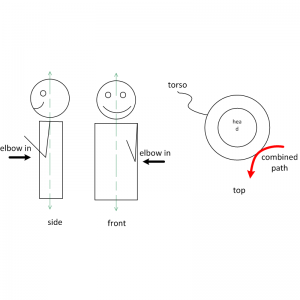
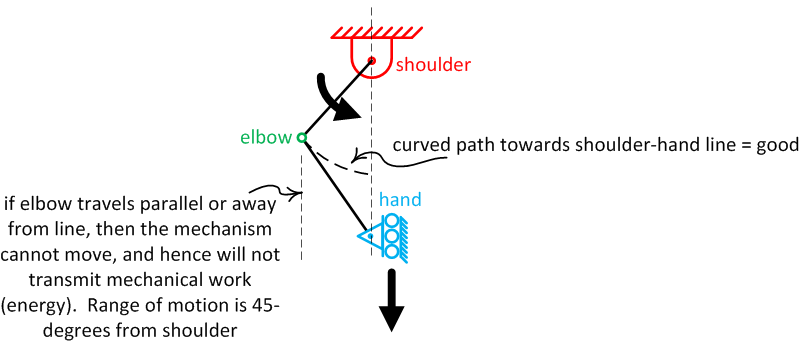
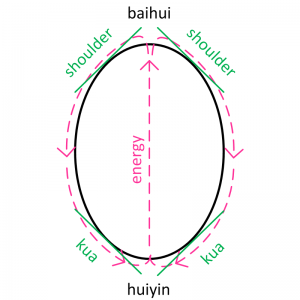

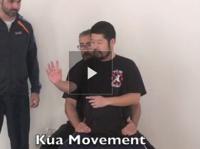
{ 12 comments… read them below or add one }
Well it’s not often you can get a Mercedes symbol, the cinnabar red immortal pill, and Lil’ John, all in one cohesive article, but you have managed to do it! All kidding aside, awesome work putting your notes together so clearly. Extremely helpful. Thank you.
How to produce the red pills exactly ?
I believe, they are not necessary. But to know the ingredients and manufacturing procedure would be interesting. Nature is maybe already knowing more …
It’s generally believed that external alchemists somehow refined Cinnabar (mercury sulfide), which gave the pill its red color, and lead, with other ingredients. Through a process of “cooking” ingredients in a “furnace” this pill was formed and ingested. Considering the fact that all these ingredients are toxic to human beings, as you might imagine, many people who ingested it died, or went insane from mercury poisoning. Some say that those able to survive the ordeal, eventually became immortal. Others say those who died immediately became immortal, and the level of immortality they achieved could be determined by the dead body’s condition.
Internal alchemists later borrowed their predecessor’s language and gave hidden meaning’s to some of the ingredients and processes used. For example, in later literature “mercury” was associated with “mind” due to the mind’s mercurial nature (meaning that it’s easily stimulated and hard to stabilize) much like liquid mercury. “Fanning the fire” the way an early alchemist might stoke a fire to heat up his furnace, was later associated with a breathing technique where the abdomen is pumped in and out like a bellows in some internal systems (also known as “bellows breathing”). “Set up the furnace” has different meanings attributed to it and is really the only one relevant to us as Practical Method practitioners, as far as I know anyway.
Master Chen talked about this in Pheonix and drew a little picture in my notebook. The picture was like V with a circle sitting in it. Master Chen said that “to set up the furnace” in some schools means to concentrate their efforts on creating the “dan tien”. However, he said in his school of thought the effort is concentrated on turning the V shape into a U shape, essentially making a place for the dan tien to be located, and in so doing it would be formed and able to move freely and have stability inside the U shape. This is achieved by “opening the kua”…
please refer to: “kua function” video http://practicalmethod.com/2012/10/kua-function-online-video/
also : “kua opening mechanics” video http://practicalmethod.com/2012/12/kua-opening-mechanics-online-video/
also :”Body Part Functions 2012″ video http://practicalmethod.com/2012/12/body-part-functions-2012-online-video/
Great notes Allan! thanks for sharing 🙂
Rather amazed you are able to take such great notes. I’ve passed them on to my students to enjoy. AMazing job Allan! Thanks for sharing your excellent notes
Indeed! Those notes are terrific. Thank you.
Allan should now be the official note taker for the Toronto group. He has been producing detailed notes with amazing graphics. Way to go, Allan!
Great notes Allan, you can find his older notes by clicking on his name http://practicalmethod.com/author/allan-haddad/
Great notes with thanks, Allan, it helps a lot for our training.
My question is assuming that the kua(s) are opened does that result in neutral equalibrium because the center of gravity is neither raised or lowered, basically by allowing those to be at the same level at the same time then potential energy, rotation, and reveloution are possible because if something with neutral equilibrium moves those around with follow, and then using joint rotation, you are using angular velocity which then turns into linear velocity, almost like a series of rotations(angular velocity occur) starting from the bottom up then transmitted to linear velocity, therefore if you have these continous angular velocity it is like a wheel continuously spinning around the axis while taiji has numerous axis points that are rotating.
Statically the kua does not need to be open to deal with a force. Dynamically speaking, as far as equilibrium is concerned, the kuas’ ability to neutralize, as with many other points, is primarily a function of the degrees of freedom or being able to align with respect to vector(s). The kua area is very important since it is a major demarcation between top and bottom. How you align everything is rooted in the foundations or circles.